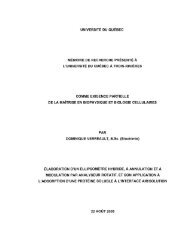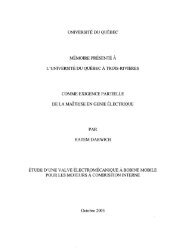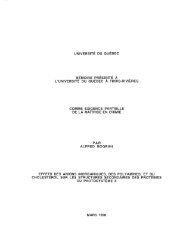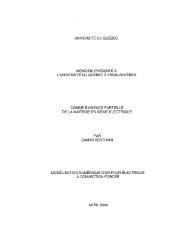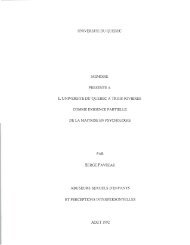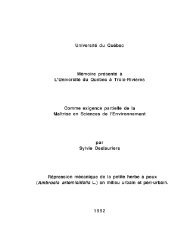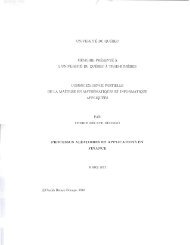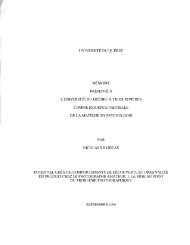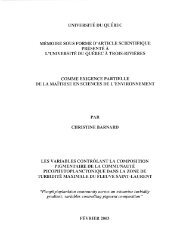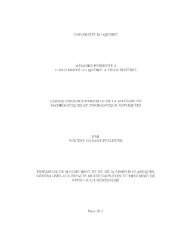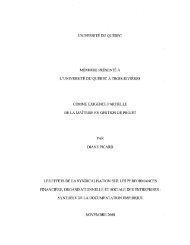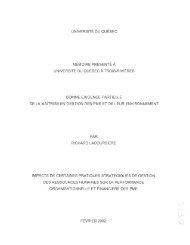Biomanipulation du meunier noir (Catostomus commersoni)
Biomanipulation du meunier noir (Catostomus commersoni)
Biomanipulation du meunier noir (Catostomus commersoni)
You also want an ePaper? Increase the reach of your titles
YUMPU automatically turns print PDFs into web optimized ePapers that Google loves.
3.3.8 Brook trout repro<strong>du</strong>ctive investment<br />
The fecundity of female brook trout was estimated by proportion using the mean<br />
dry weight of three samples of 25 eggs and the total egg mass (Snyder 1983). Brook<br />
trout gonads were preserved in Gilson's fluid; the eggs were then separated from ovarian<br />
connective tissue, air dried for 48h, and weighted (±0.01 mg). The accuracy of this<br />
method was ±5% when compared with total counts made on 10% of the samples.<br />
To evaluate the compensation in repro<strong>du</strong>ctive investment of brook trout <strong>du</strong>ring the<br />
experiment, we first tested for differences in the slope of the relationship between (i) fish<br />
length and the number of eggs, (ii) fish length and the mean weight of one egg and (iii)<br />
fish length and gonad weight, throughout the white sucker biomanipulation. As the slope<br />
of the relationships between fish length and all three fecundity variables did not differ in<br />
lakes Claudette, Mastigou and Des Îles (p>0.05), we tested for differences in mean<br />
number of eggs, mean egg weight and mean gonad weight using mixed-model<br />
ANCOV As with brook trout length as a covariable.<br />
3.4 RESULTS<br />
Table 2 gives a summary of CPUE, BPUE, age and length at maturity and growth<br />
results found in lakes Mastigou, Claudette and Des Îles for both white sucker and brook<br />
trout, <strong>du</strong>ring and after the cessation of white sucker mass removal. Table 3 gives a<br />
summary of results found in the three studied lakes for brook trout repro<strong>du</strong>ctive<br />
investment variables. The results of the mixed-models can be found in Annex 1.<br />
3.4.1 White sucker removal<br />
The total biomass of white sucker removed from the three studied lakes ranged<br />
from 3064 kg to 10635 kg <strong>du</strong>ring the seven to nine years ofbiomanipulation (Fig. 1). In<br />
Lake Mastigou, the biomass ofwhite sucker removed was almost 3000 kg the first year,<br />
and then dropped and stabilized around 1300 kg the following years while in Lake<br />
61



